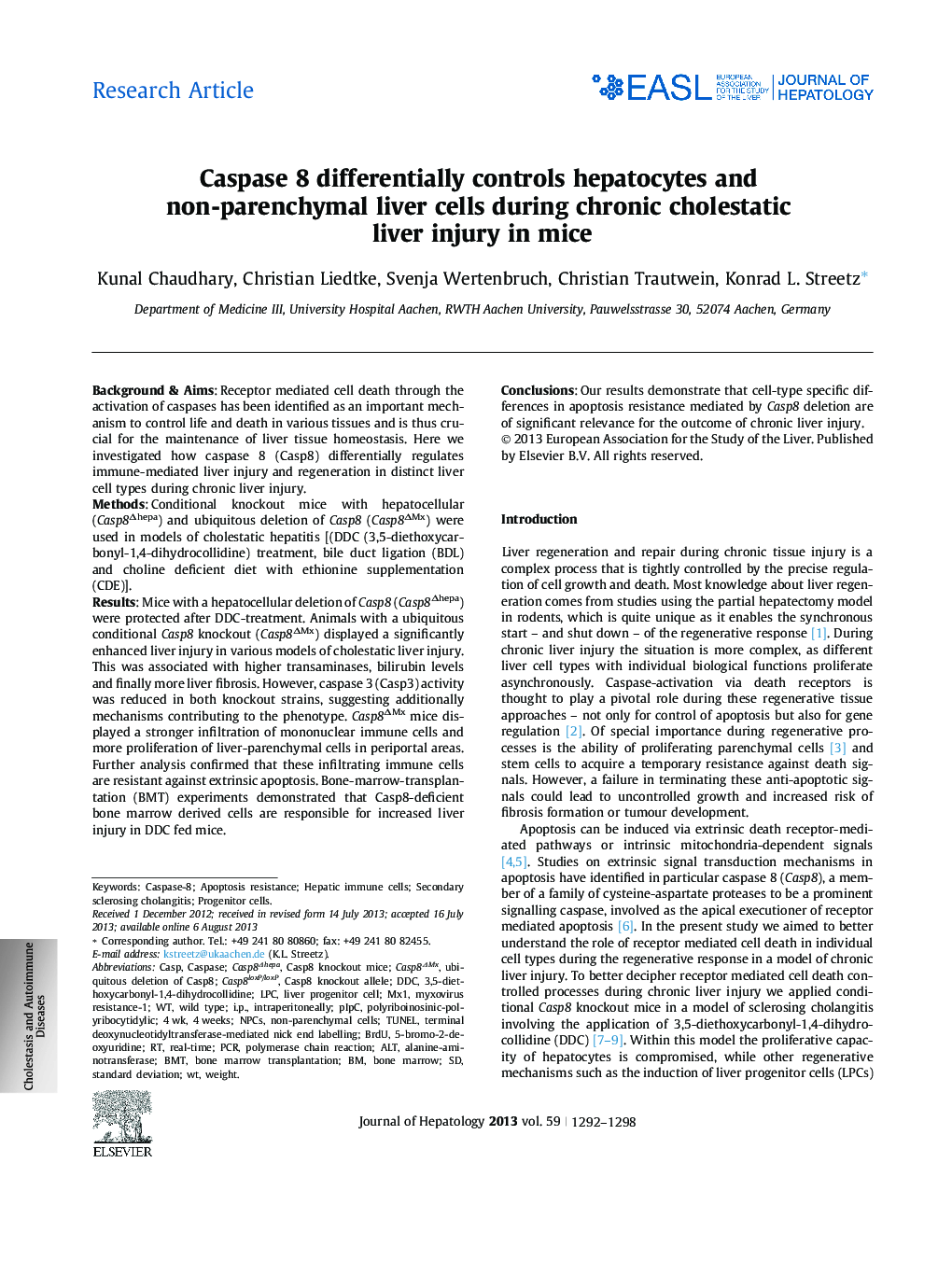| Article ID | Journal | Published Year | Pages | File Type |
|---|---|---|---|---|
| 6104007 | Journal of Hepatology | 2013 | 7 Pages |
Background & AimsReceptor mediated cell death through the activation of caspases has been identified as an important mechanism to control life and death in various tissues and is thus crucial for the maintenance of liver tissue homeostasis. Here we investigated how caspase 8 (Casp8) differentially regulates immune-mediated liver injury and regeneration in distinct liver cell types during chronic liver injury.MethodsConditional knockout mice with hepatocellular (Casp8Îhepa) and ubiquitous deletion of Casp8 (Casp8ÎMx) were used in models of cholestatic hepatitis [(DDC (3,5-diethoxycarbonyl-1,4-dihydrocollidine) treatment, bile duct ligation (BDL) and choline deficient diet with ethionine supplementation (CDE)].ResultsMice with a hepatocellular deletion of Casp8 (Casp8Îhepa) were protected after DDC-treatment. Animals with a ubiquitous conditional Casp8 knockout (Casp8ÎMx) displayed a significantly enhanced liver injury in various models of cholestatic liver injury. This was associated with higher transaminases, bilirubin levels and finally more liver fibrosis. However, caspase 3 (Casp3) activity was reduced in both knockout strains, suggesting additionally mechanisms contributing to the phenotype. Casp8ÎMx mice displayed a stronger infiltration of mononuclear immune cells and more proliferation of liver-parenchymal cells in periportal areas. Further analysis confirmed that these infiltrating immune cells are resistant against extrinsic apoptosis. Bone-marrow-transplantation (BMT) experiments demonstrated that Casp8-deficient bone marrow derived cells are responsible for increased liver injury in DDC fed mice.ConclusionsOur results demonstrate that cell-type specific differences in apoptosis resistance mediated by Casp8 deletion are of significant relevance for the outcome of chronic liver injury.
